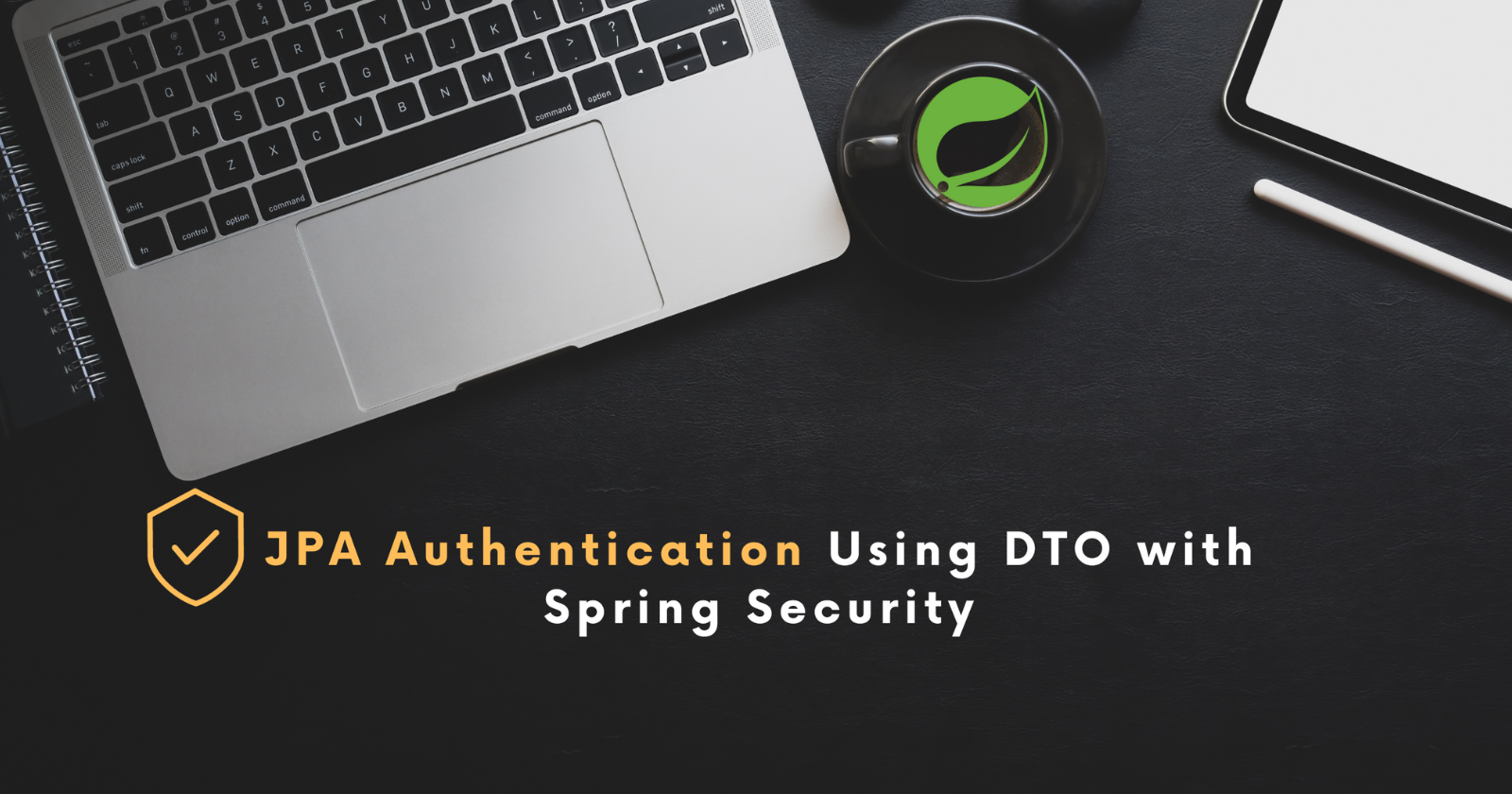JPA Authentication Using DTO with Spring Security
 Yaroslav Prozorov
Yaroslav Prozorov
DTO (Data Transfer Object):
Create a DTO (e.g., UserRegistrationDto) to transfer user registration data to your controller. Here's an example:
@Data
@AllArgsConstructor
@NoArgsConstructor
@Builder
public class CreateUserRequest {
private String username;
private String email;
private String password;
private Address address;
private String roles;
public User toUser(PasswordEncoder passwordEncoder) {
String encodedPassword = passwordEncoder.encode(this.password);
Address address1 = Address.builder()
.addressType(address.getAddressType())
.city(address.getCity())
.build();
return User.builder()
.username(this.username)
.email(this.email)
.password(encodedPassword)
.roles(this.roles)
.address(address1)
.build();
}
}
The CreateUserRequest DTO is designed to encapsulate data for creating a new user. It includes fields for username, email, password, address, and roles. It also contains a toUser method that converts the DTO into a User entity, encoding the password in the process.
Controller
Create a controller to handle user registration requests. Validate the DTO, encode the password, and save the user in your database. Here's an example:
@RestController
@RequestMapping("management/api/")
public class UserController {
private final UserService userService;
private final PasswordEncoder passwordEncoder;
@Autowired
public UserController(UserService userService, PasswordEncoder passwordEncoder) {
this.userService = userService;
this.passwordEncoder = passwordEncoder;
}
@PostMapping("/register")
public String registerUser(@RequestBody CreateUserRequest request) {
userService.createUser(request.toUser(passwordEncoder));
return "User registered successfully!";
}
}
The UserController is responsible for handling user registration requests. Here's what's happening in this controller:
@RestControllerand@RequestMappingannotations define this class as a REST controller, and it maps requests under the/management/api/URL path.In the constructor, it injects the
UserServiceandPasswordEncoder. These dependencies are for handling user registration.The
@PostMapping("/register")annotation specifies that this method should handle POST requests to the/management/api/registerendpoint. It takes aCreateUserRequestobject as a request body.Inside the
registerUsermethod, it invokes thetoUsermethod of theCreateUserRequestDTO, passing thePasswordEncoderto encode the password. Then, it calls thecreateUsermethod from theUserServiceto save the user to the database.
Models
Define a User entity for your JPA repository. Here's an example:
@Entity
@Transactional
@Data
@NoArgsConstructor
@Table(name = "users")
@AllArgsConstructor
@Builder
public class User{
@Id
@GeneratedValue(strategy = GenerationType.IDENTITY)
@Column(name = "user_id")
private Long userId;
private String username;
private String password;
private String email;
@OneToOne(cascade = CascadeType.ALL)
@JoinColumn(name = "fk_add_id")
private Address address;
private String roles;
}
@Entity
@Transactional
@Data
@NoArgsConstructor
@Table(name = "address")
@AllArgsConstructor
@Builder
public class Address {
@Id
@GeneratedValue(strategy = GenerationType.IDENTITY)
@Column(name = "add_id")
private Long addressId;
private String city;
private String addressType;
}
You have defined two entities - User and Address.
User: Represents user data stored in the database. It includes fields likeuserId,username,password,email,address, androles. It is annotated with JPA annotations such as@Entity,@Table, and@Idto define its mapping to the database.Address: Represents the user's address. It has fields likeaddressId,city, andaddressType. Similar to theUserentity, it is annotated for JPA mapping.
public class SecurityUser implements UserDetails {
private User user;
public SecurityUser(User user) {
this.user = user;
}
@Override
public Collection<? extends GrantedAuthority> getAuthorities() {
return Arrays.stream(user
.getRoles()
.split(","))
.map(SimpleGrantedAuthority::new)
.toList();
}
@Override
public String getPassword() {
return user.getPassword();
}
@Override
public String getUsername() {
return user.getPassword();
}
@Override
public boolean isAccountNonExpired() {
return true;
}
@Override
public boolean isAccountNonLocked() {
return true;
}
@Override
public boolean isCredentialsNonExpired() {
return true;
}
@Override
public boolean isEnabled() {
return true;
}
}
The SecurityUser class implements the UserDetails interface in Spring Security and is used to provide user details for authentication and authorization. It takes a User object representing a user from the application's database and provides the following details:
getAuthorities(): Returns a collection ofGrantedAuthorityobjects representing the user's roles and authorities.getPassword(): Returns the user's password, typically retrieved securely from the database.getUsername(): Returns the user's username, used as a unique identifier.isAccountNonExpired(): Indicates if the user's account never expires (always returnstruein this implementation).isAccountNonLocked(): Indicates if the user's account is never locked (always returnstruein this implementation).isCredentialsNonExpired(): Indicates if the user's credentials (password) never expire (always returnstruein this implementation).isEnabled(): Indicates if the user's account is always enabled (always returnstruein this implementation).
The class acts as an intermediary between the application's User entity and Spring Security, providing user details for authentication and authorization checks.
Services
UserService: This service handles user-related operations. It has a constructor that injects theUserRepository, allowing it to interact with the database. It provides asaveUsermethod to save a user to the database.UserDetailsService: This class implements theUserDetailsServiceinterface from Spring Security. It loads user details based on the provided username. It relies on theUserRepositoryto find the user by username.
@Service
public class UserService {
private final UserRepository userRepository;
public UserService(UserRepository userRepository) {
this.userRepository = userRepository;
}
public void saveUser(User user) {
userRepository.save(user);
}
@Service
public class UserDetailsService implements UserDetailsService {
private final UserRepository userRepository;
public UserDetailsService(UserRepository userRepository) {
this.userRepository = userRepository;
}
@Override
public UserDetails loadUserByUsername(String username) throws UsernameNotFoundException {
return userRepository
.findUserByUsername(username)
.map(SecurityUser::new)
.orElseThrow(() -> new UsernameNotFoundException("Username not found " + username));
}
}
Repositories
public interface UserRepository extends JpaRepository<User, Long> {
Optional<User> findByUsername(String username);
// Other query methods can be added as needed
}
public interface AddressRepository extends JpaRepository<Address, Long> {
// Other query methods can be added as needed
}
UserRepository: An interface that extendsJpaRepositoryfor theUserentity. It provides methods for querying and interacting with theUserentity in the database, such asfindByUsername.AddressRepository: Similar toUserRepository, this interface extendsJpaRepositoryfor theAddressentity, providing database interaction methods.
Security Configurations
@Configuration
@EnableWebSecurity
public class SecurityConfig {
private final UserDetailsService userDetailsService;
public SecurityConfig(UserDetailsService userDetailsService) {
this.userDetailsService = userDetailsService;
}
@Bean
public SecurityFilterChain apiSecurityFilterChain(HttpSecurity http) throws Exception {
return http
.csrf(csrf -> csrf.disable())
.authorizeHttpRequests(auth -> {
auth.requestMatchers("/management/api/register").permitAll();
auth.requestMatchers("/error").permitAll();
auth.anyRequest().authenticated();
}
)
.userDetailsService(userDetailsService)
.formLogin(login ->
login.permitAll())
.build();
}
@Bean
public PasswordEncoder passwordEncoder() {
return new BCryptPasswordEncoder();
}
}
SecurityConfig: This class configures Spring Security for your application. Here's what's happening:It's annotated with
@Configurationand@EnableWebSecurity, indicating that it's a configuration class for Spring Security.In the constructor, it injects the
UserDetailsService, which is used for user authentication.The
apiSecurityFilterChainmethod defines the security configuration for your API. It disables CSRF protection, permits access to/management/api/registerand error pages, and requires authentication for all other requests.The
formLoginmethod configuration specifies that form-based authentication is permitted, allowing users to log in.The
passwordEncoderbean is defined to use BCrypt for password hashing.
This configuration ensures that only authenticated users can access most endpoints, except the registration endpoint, which is open to unauthenticated users. The UserDetailsService loads user details for authentication and the PasswordEncoder is used to securely hash and verify passwords.
Conclusion
Thank you for learning with me! I hope this guide helped you understand how to register users using Spring Boot. Keep up the good work, and best of luck with your projects!
Subscribe to my newsletter
Read articles from Yaroslav Prozorov directly inside your inbox. Subscribe to the newsletter, and don't miss out.
Written by

Yaroslav Prozorov
Yaroslav Prozorov
I'm Yaroslav. I really love tech, especially Java, and all things related to technology. But I'm not just about coding – I'm also into creating my own brand and sharing bits of my life's adventures. Oh, and I'm a book enthusiast too!